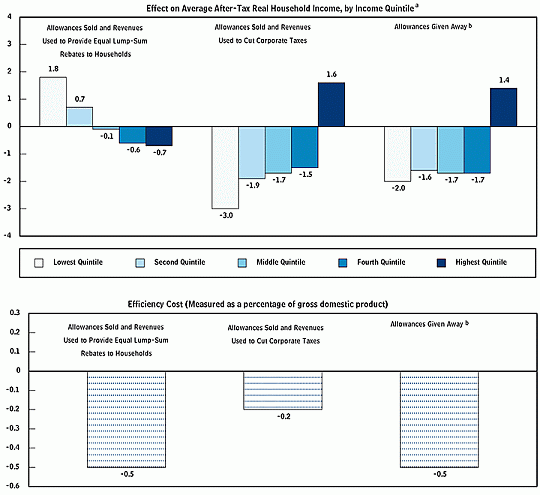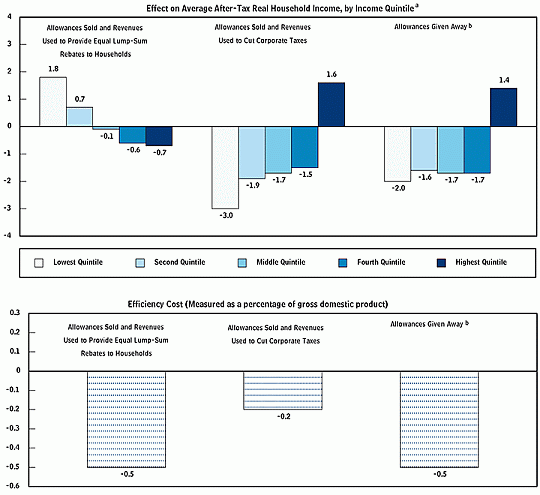The debate around various climate policies sounds complex, but there’s a simple way to understand it: follow the money. When we put a price on carbon emissions, we place value on something that used to be worthless. That means all the sudden there’s a big new pot of money. The most important question facing policymakers is: who gets that money?
This question applies equally to a carbon tax or a cap-and-trade system. With a tax, money goes to gov’t, and the gov’t decides what to do with it. In a cap-and-trade system where the pollution permits are auctioned, the money goes to gov’t, and the gov’t decides what to do with it. In a cap-and-trade system where the pollution permits are given away for free, the money goes to polluting industries — that is, the decision about what to do with it is baked into the policy. Either way, a decision about what to do with the money has to be made.
The decision will be guided by a number of considerations, but two of the most important are fairness and efficiency. Fairness means that low-income taxpayers don’t get screwed. Efficiency means that that the program produces the smallest possible overall hit to the economy.
The Congressional Budget Office — most recently in testimony to Congress — has examined three options for what to do with the money: rebate it back to taxpayers, use it to cut corporate taxes, or give it to polluting industries in the form of free permit allocations.
CBO offers a graphic — possibly the most important graphic you’ll see in the climate policy debate; copy it and use it! — that shows the effects of those three options (click for larger version):
Up top, you see the five quintiles of household income and how they’d be affected by the three options. On the bottom is the effect of the three options on the overall economy (measured as hit to GDP). On the left, you see the effect of rebating the tax/auction revenue money to taxpayers in lump sum payments; in the middle, a cut to corporate taxes; on the right, pollution permits given away.
Here’s the takeaway:
- Auctioning permits and rebating the revenue, compared to freely allocating permits, produces the same macroeconomic effect, but
- auction-and-rebate is vastly more progressive, favoring low-income taxpayers, while freely allocating permits overwhelmingly favors the rich.
As the debate over climate policy heats up, it’s crucial to understand this. Right now Republicans are accusing Obama of using cap-and-trade revenue as part of his “social program” because he proposes rebating most of it to taxpayers. They would prefer that more of the permits be given away. But that’s part of a social program as well — a program to transfer wealth from low-income Americans to the rich.
This is as straightforward as economic justice issues get. Progressives need to be armed for this fight.




